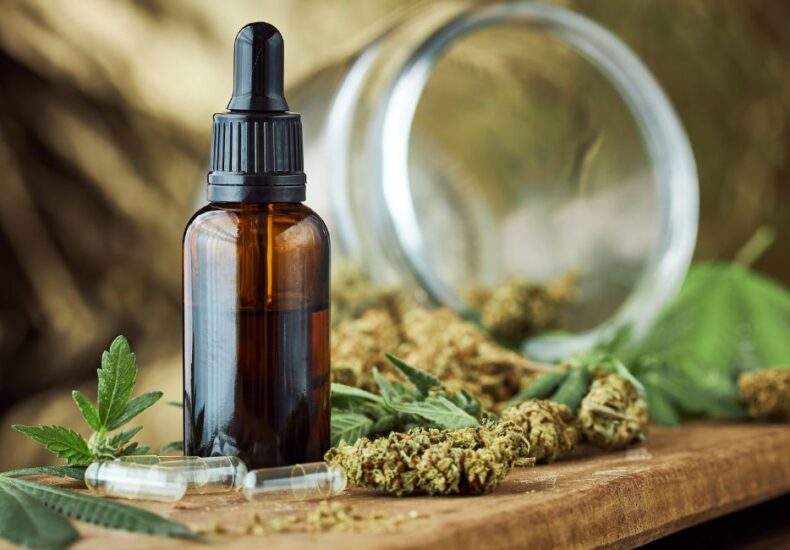
Why Cannabis Plant Contains Higher THC Levels
The cannabis plant, known for its psychoactive properties, has been a subject of intrigue and research for decades. One of the most discussed aspects of cannabis is its tetrahydrocannabinol (THC) content. THC is the primary psychoactive compound in cannabis, responsible for the “high” sensation. Over the years, the cannabis plant contains higher thc levels have increased significantly. This article explores the reasons behind this rise, supported by research, examples, and statistics.
The Role of Genetics in THC Levels
Genetics play a pivotal role in determining the THC content of cannabis plants. Breeders have selectively cultivated strains with higher THC levels to meet consumer demand for more potent products. This selective breeding has led to the development of strains with significantly higher THC concentrations than those found in wild or traditional varieties.
For instance, a study published in the journal “Biological Psychiatry” highlighted that the average THC content in cannabis has increased from about 3% in the 1980s to over 12% in recent years. This increase is largely attributed to genetic manipulation and selective breeding practices.
Environmental Factors Influencing THC Production
Environmental conditions significantly impact the THC levels in cannabis plants. Factors such as light, temperature, and soil nutrients can influence the plant’s ability to produce THC. Growers often manipulate these conditions to maximize THC production.
- Light: Cannabis plants require specific light cycles to produce high THC levels. Indoor growers use artificial lighting to mimic the sun’s natural cycle, optimizing the light spectrum for THC production.
- Temperature: Maintaining an optimal temperature range is crucial for THC synthesis. Extreme temperatures can stress the plant, affecting its ability to produce cannabinoids.
- Soil Nutrients: The availability of nutrients in the soil can enhance or inhibit THC production. Growers often use nutrient-rich soils or hydroponic systems to provide the necessary elements for optimal growth.
Impact of Legalization and Market Demand
The legalization of cannabis in various regions has led to increased competition among growers, driving the demand for more potent strains. Consumers often associate higher THC levels with better quality, prompting growers to focus on producing strains with elevated THC content.
In states like Colorado and Washington, where cannabis is legal, dispensaries frequently advertise strains with high THC percentages. This market trend has incentivized growers to prioritize THC-rich strains, further contributing to the overall increase in THC levels.
Technological Advancements in Cultivation
Advancements in cultivation technology have enabled growers to produce cannabis with higher THC levels more efficiently. Techniques such as hydroponics, aeroponics, and advanced genetic engineering have revolutionized cannabis cultivation.
- Hydroponics: This soil-less growing method allows for precise control over nutrient delivery, leading to healthier plants with higher THC content.
- Aeroponics: By suspending plants in the air and misting their roots with nutrient solutions, growers can achieve rapid growth and increased cannabinoid production.
- Genetic Engineering: Modern genetic techniques enable the modification of cannabis DNA to enhance THC production, creating strains with unprecedented potency.
Case Studies and Statistics
Several case studies and statistical analyses have documented the rise in THC levels over the years. A report by the National Institute on Drug Abuse (NIDA) noted that the average THC content in confiscated cannabis samples increased from 4% in 1995 to 15% in 2018.
Another study conducted by the University of Mississippi’s Potency Monitoring Program found that some strains now contain THC levels exceeding 30%. These findings underscore the significant increase in THC potency over the past few decades.
Potential Implications of Higher THC Levels
The rise in THC levels has sparked discussions about its potential implications on health and society. While higher THC content may enhance the recreational experience for some users, it can also lead to increased risks of adverse effects, such as anxiety, paranoia, and cognitive impairment.
Medical professionals and researchers continue to study the long-term effects of high-THC cannabis use, emphasizing the need for responsible consumption and regulation.
Conclusion
The increase in THC levels in cannabis plants is a result of various factors, including genetic manipulation, environmental conditions, market demand, and technological advancements. While this trend has led to the availability of more potent cannabis products, it also raises questions about the potential health implications. As the cannabis industry continues to evolve, ongoing research and responsible practices will be key to understanding and managing the effects of high-THC cannabis.
Recent Posts
- The Ecological Effect of Mushroom Farming for Coffee Manufacturing
- Consumer Voices: The Most Effective and Worst of Lear Funding
- “Celebrating Holidays with Festive Flavors of Delta nine THC Gummies”
- The Ultimate Guide to Picking the Right CBD Oil for Your Pet dog
- From Pain Relief to Anxiousness Reduction: The Versatile Perks of CBD Oil for Dogs